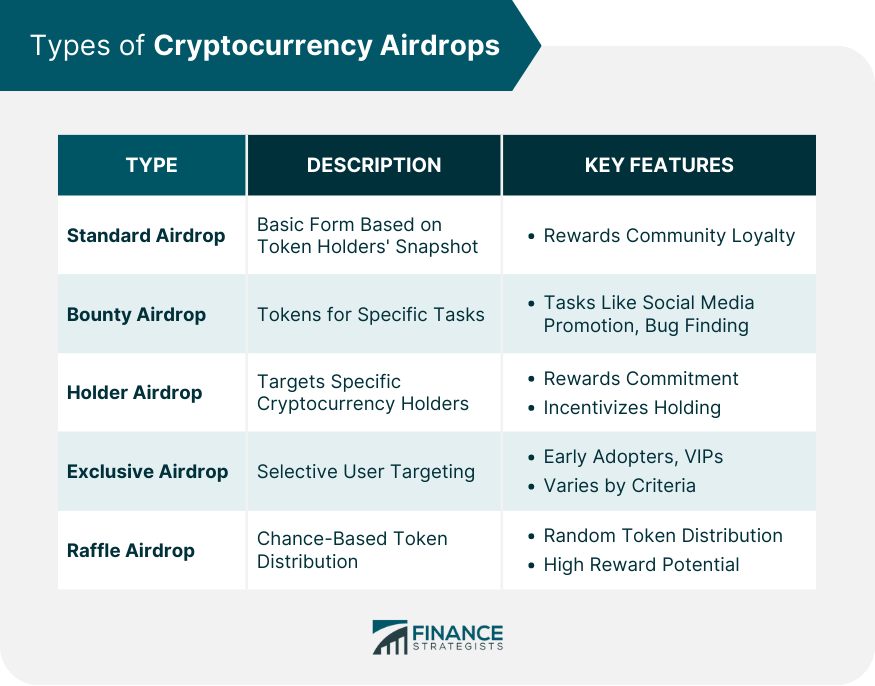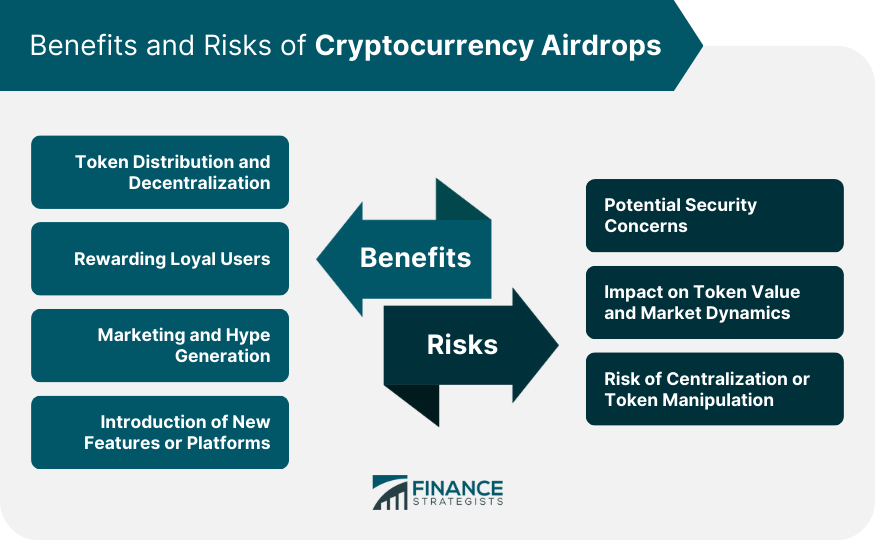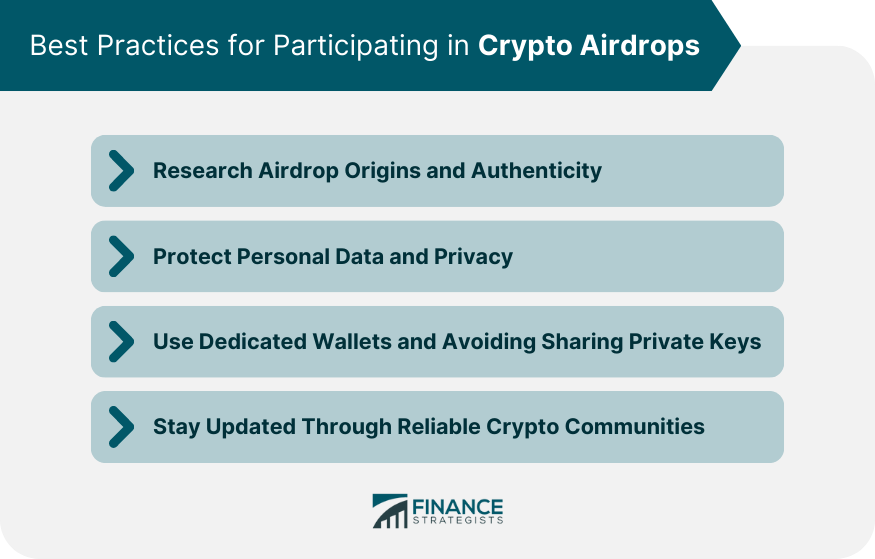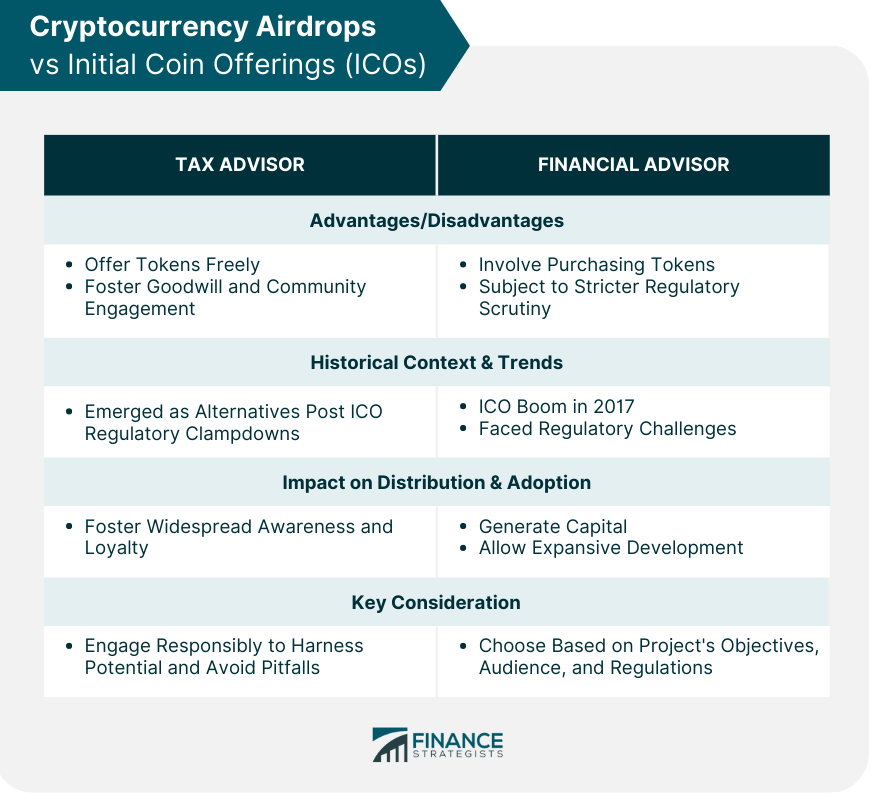Cryptocurrency airdrops represent a fascinating facet of the digital assets realm. At its core, an airdrop is a method through which cryptocurrency projects distribute their tokens or coins to the wallets of users, free of charge. These distributions often serve a variety of purposes. For some projects, airdrops are a means to reward loyal users. For others, they act as a strategy to increase awareness and foster decentralization of their tokens. Stepping back in time, airdrops weren't always a prominent feature of the crypto landscape. Their origins trace back to the early days of crypto when projects sought innovative methods to distribute tokens and ensure decentralization. Over time, as the crypto space burgeoned, airdrops evolved from mere token distributions into sophisticated marketing and user engagement tools, often backed by intricate strategies and objectives. Peeling back the curtain on airdrops reveals a range of mechanisms propelling their execution. Some projects opt for a snapshot-based approach, where token holders at a specific point in time receive airdropped tokens. Others might utilize smart contracts that automatically disperse tokens based on predefined conditions. Regardless of the method, the aim remains consistent: distributing tokens efficiently and effectively to the desired recipients. It's imperative to draw a distinction between airdrops and another prevalent phenomenon in the crypto space: forks. While both involve the distribution of new tokens, their genesis is different. Airdrops gift tokens without the need for a transaction, whereas forks typically result in a split of the blockchain, leading to the creation of a new cryptocurrency. Understanding this differentiation is crucial for any crypto enthusiast navigating the labyrinthine world of digital assets. A standard airdrop is the most basic form, often hinging on a snapshot of existing token holders at a specific time. Those included in this snapshot are the recipients of the airdropped tokens. This method is straightforward, ensuring that existing community members are rewarded for their loyalty and participation. The bounty airdrop takes on a more task-oriented approach. Here, tokens are distributed as rewards for completing specific tasks, such as promoting the project on social media, identifying software bugs, or creating content. It’s a win-win, with projects gaining valuable feedback and engagement, and users earning tokens for their efforts. Holder airdrops specifically target users who hold a particular cryptocurrency. The rationale is to reward those who have shown commitment to a certain project. By rewarding long-term holders, projects can incentivize holding behavior, potentially stabilizing prices and building a loyal community. Exclusive airdrops are, as the name suggests, selective. They might target early adopters, VIP members, or other special categories of users. The criteria can be varied—ranging from holding a certain amount of tokens to having participated in previous project activities. Taking on a more chance-based approach, raffle airdrops distribute tokens to users chosen at random. Though every participant might not receive tokens, the allure of potentially winning a significant amount can drive substantial interest and engagement for the project. Navigating the airdrop landscape demands an understanding of eligibility criteria. While some airdrops are universally accessible, others have specific requirements. These can range from holding a minimum quantity of tokens to being a part of a project's community. Additionally, there might be geographic restrictions, given the varying regulatory climates across countries. Ensuring alignment with these prerequisites is paramount for a successful airdrop participation. Information is key in the fast-paced crypto world. Platforms like Airdrop Alert, CoinMarketCap, and various crypto-centric forums frequently spotlight upcoming airdrops. Moreover, joining a project's official Telegram or Discord channels can offer real-time updates. However, it's vital to exercise caution and validate any airdrop information through official project websites or trusted community moderators. Once eligible for an airdrop, the next step involves the receipt and claim of tokens. While some tokens are automatically deposited into user wallets, others may necessitate a claim process. This could involve signing a transaction, interacting with a smart contract, or even completing a KYC verification. It's crucial to follow the provided instructions meticulously to ensure a seamless token claim. A primary advantage of airdrops is the facilitation of broader token distribution. By dispersing tokens among a vast user base, projects can avoid centralization—a critical concern in the decentralized world of cryptocurrencies. Decentralization not only secures the network but also promotes equitable power distribution among stakeholders. Loyalty, in the cryptoverse, is gold. Airdrops serve as a tangible token of appreciation for dedicated community members. By offering free tokens, projects can reinforce community bonds, engendering trust and fostering a supportive ecosystem where users feel valued and recognized. Airdrops can be powerful marketing tools. The allure of free tokens can amplify project visibility, drawing in a wider audience. This increased attention, coupled with community discussions and media coverage, can create a buzz, propelling a project into the crypto limelight. Airdrops can also act as gateways to introduce new platform features or functionalities. By distributing tokens linked to new services, projects can drive user adoption and engagement. This not only showcases the project's evolution but also offers users firsthand experience with new offerings. The crypto realm, though exhilarating, isn't devoid of threats. Airdrops, particularly those requiring users to share wallet details or undergo dubious verification processes, can pose security risks. There's a looming danger of phishing attempts or malware injections that every participant should be wary of. With a sudden influx of free tokens, the market can experience volatility. Some recipients might offload their airdropped tokens immediately, leading to a potential price drop. Hence, the very act of distributing tokens freely can influence market dynamics in unpredictable ways. Contrary to their decentralizing intent, some airdrops can inadvertently centralize token holdings. If the criteria are skewed towards large holders or if certain participants receive disproportionately high amounts, it might lead to a centralized distribution, defeating the airdrop's purpose. The crypto world teems with both genuine gems and treacherous traps. Before diving into an airdrop, conducting thorough research is indispensable. Scrutinize the project's whitepaper, assess team members' credibility, and delve into community feedback. Authentic airdrops emanate from projects with clear objectives, transparent roadmaps, and genuine community engagement. While the allure of free tokens is strong, it shouldn't come at the cost of personal privacy. Exercise caution when an airdrop demands excessive personal data. A legitimate airdrop will prioritize user security, refraining from asking for private keys or other sensitive wallet information. Adopt a guarded approach, sharing only what's absolutely necessary. Safety first, always. Instead of using primary wallets for airdrops, consider setting up dedicated wallets. This stratification ensures that even if one wallet faces security breaches, primary funds remain untouched. Furthermore, under no circumstances should one share private keys. Remember, a genuine airdrop will never ask for them. Staying abreast of the ever-evolving crypto scene is vital. Regularly engage with trusted crypto communities, be it on Reddit, Telegram, or other platforms. These spaces, brimming with seasoned enthusiasts, offer insights, updates, and cautionary tales that can guide one's airdrop journey. The crypto terrain, as promising as it is, has its shadows. Scam airdrops lurk, hoping to ensnare the unwary. Be wary of overgenerous offers, unclear project objectives, or airdrops demanding deposits. Such red flags often signal malicious intent. Vigilance and informed skepticism are the best defenses against such deceitful ploys. Guarding against scam airdrops isn't just about identification—it's about proactive protection. Utilize hardware wallets, employ two-factor authentication, and always double-check website URLs. By adopting these protective measures, one fortifies themselves against the majority of scam attempts, ensuring both peace of mind and asset safety. The intersection of cryptocurrency and taxation is intricate. In many jurisdictions, airdropped tokens are considered taxable income. This means that recipients might be obligated to report the fair market value of these tokens at the time of receipt. It's paramount to stay informed about local tax regulations and seek professional guidance if necessary. Taxation landscapes are dynamic, especially in the realm of crypto. Several countries are revisiting their crypto taxation frameworks, aiming for clarity and fairness. Recent rulings, legislative proposals, and regulatory shifts can significantly impact how airdrop recipients report and pay taxes. Continuous engagement with updated regulatory guidelines is essential to ensure compliance. Airdrops and ICOs, both avenues for token distribution, come with their distinct sets of pros and cons. While airdrops offer tokens freely, fostering goodwill and community engagement, ICOs involve purchasing tokens, often accompanied by detailed project roadmaps and milestones. However, the investment nature of ICOs means they're often subjected to stricter regulatory scrutiny compared to airdrops. The ICO boom of 2017 marked a watershed moment in crypto financing. However, as regulatory clampdowns ensued, projects began to pivot, exploring alternatives like airdrops. The ensuing years have seen a symbiotic relationship between the two, with airdrops sometimes preceding or following ICOs, leveraging the strengths of both distribution methods. Both airdrops and ICOs aim for wider token distribution and adoption. While ICOs can generate significant capital for projects, allowing for expansive development, airdrops can create widespread awareness and foster community loyalty. The optimal choice often hinges on a project's objectives, target audience, and the regulatory environment. In the vast expanse of the cryptocurrency universe, airdrops shine as both opportunities and cautionary tales. By engaging with them knowledgeably and responsibly, one can harness their potential while steering clear of pitfalls. Cryptocurrency airdrops have evolved into powerful tools in the digital asset realm, serving varied objectives from rewarding loyalty to boosting awareness. Emerging from the early stages of the crypto era, they've transitioned from mere token distributions to intricate strategies for user engagement. While airdrops efficiently distribute tokens to users, understanding their distinction from other phenomena like forks is pivotal. There's a vast spectrum of airdrops, each with unique criteria and methods, and being aware of eligibility prerequisites ensures successful participation. Despite the potential benefits, airdrops present certain risks, such as security threats and market dynamics shifts. Staying informed, safeguarding personal data, and recognizing scam tactics are crucial. Additionally, participants must be cognizant of the tax implications in their respective jurisdictions. As with all crypto ventures, informed and cautious engagement with airdrops can yield rewards while minimizing risks.What Are Cryptocurrency Airdrops?
How Cryptocurrency Airdrops Work
Mechanisms Behind Airdrops
Differentiating Between Airdrops and Forks
Types of Cryptocurrency Airdrops
Standard Airdrop
Bounty Airdrop
Holder Airdrop
Exclusive Airdrop
Raffle Airdrop

Process of Cryptocurrency Airdrops
Eligibility and Pre-requisites
Common Platforms and Channels for Airdrop Announcements
Receiving and Claiming Airdropped Tokens
Benefits of Cryptocurrency Airdrops
Token Distribution and Decentralization
Rewarding Loyal Users
Marketing and Hype Generation
Introduction of New Features or Platforms
Risks and Concerns With Cryptocurrency Airdrops
Potential Security Concerns
Impact on Token Value and Market Dynamics
Risk of Centralization or Token Manipulation

Best Practices for Participating in Crypto Airdrops
Research Airdrop Origins and Authenticity
Protect Personal Data and Privacy
Use Dedicated Wallets and Avoiding Sharing Private Keys
Stay Updated Through Reliable Crypto Communities

Cryptocurrency Airdrop Scams
Identifying Red Flags and Scam Tactics
Protecting Yourself and Your Assets
Tax Implications of Receiving Airdrops
Reporting Airdrops as Income
Recent Regulatory Changes and Impacts
Cryptocurrency Airdrops vs Initial Coin Offerings (ICOs)
Comparative Advantages and Disadvantages
Historical Context and Trends
Impact on Token Distribution and Adoption

Final Thoughts
Cryptocurrency Airdrop FAQs
Cryptocurrency airdrops are methods used by projects to distribute free tokens to a wide range of users, either as rewards or promotions.
Airdrops distribute tokens freely, fostering community engagement, whereas ICOs involve purchasing tokens and are often tied to detailed project roadmaps.
Risks include potential security concerns, the impact on token value, scam airdrops, and concerns of token centralization.
Research airdrop origins, protect personal data, use dedicated wallets, avoid sharing private keys, and stay updated through reliable crypto communities.
Yes, in many jurisdictions, airdropped tokens are considered taxable income, and recipients may need to report their value at the time of receipt.
True Tamplin is a published author, public speaker, CEO of UpDigital, and founder of Finance Strategists.
True is a Certified Educator in Personal Finance (CEPF®), author of The Handy Financial Ratios Guide, a member of the Society for Advancing Business Editing and Writing, contributes to his financial education site, Finance Strategists, and has spoken to various financial communities such as the CFA Institute, as well as university students like his Alma mater, Biola University, where he received a bachelor of science in business and data analytics.
To learn more about True, visit his personal website or view his author profiles on Amazon, Nasdaq and Forbes.















